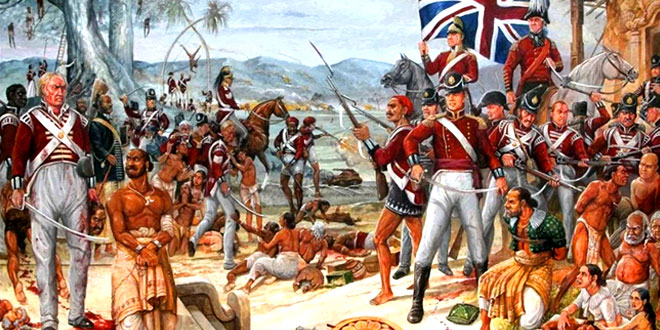Question: Write a short note on the development of factories in India.
Or
Explain the growth of factories in India.
Answer:
- Cotton and jute mills were the first to be established in India The first cotton mill was set up in 1854 at Bombay (Mumbai).
- By 1864, the number rose to four The textile null was followed by the jute mill which came into existence in 1855 in Bengal.
- Another jute mill was established in 1862 in Bengal itself.
- In North India, the Elgin Mill was started in Kanpur in the 1860s. and a year later, the first cotton mill of Ahmedabad was set up.
- By 1874, the first spinning and weaving mill of Madras (Chennai) began is production.
Question: How were the Indian merchant industrialists discriminated by the Britishers?
Or
Mention some of the problems of the Indian merchant industrialists.
Answer:
- Limited market: With the introduction of Manchester good in the Indian market the market within which Indian merchants could function became increasingly limited.
- Restriction on export of manufactured goods : The Indian merchants and traders were barred from trading with Europe in manufactured goods, and had to export only raw materials and food grains, raw cotton, opium and wheat, indigo required by the British.
- Introduction of modern ships: With the entry of modem ships Indian merchant were edged out of the shipping business.
- Exclusive chambers of the Europeans: The European merchant-industrialists had their exclusive chamber of commerce, and Indians were not allowed to become its members.
Question: Explain the major features of precolonial trade and industries.
Answer:
- Major good: Before the age of machine industries, silk and cotton goods from India dominated the international market in textiles Coarser cottons were produced in many countries, but the finer varieties often came from India
- Trading partners: Armenian and Persian merchants took the goods from Punjab to Afghanistan. eastern Persia and Central Asia. Bales of fine textiles were carried on camel back via the north-west frontier, through mountain passes and across deserts.
- Major ports: A vibrant sea trade operated through the main pre-colonial ports. Surat in the Gujarat coast connected India to the Gulf and Red Sea Ports. Masulipatnam on the Coromandel coast and Hoogly in Bengal had trade links with Southeast Asian ports.
Question: What was the impact of colonization of India on the Indian traders and merchants?
Answer:
- By the 1970s this network, controlled by Indian merchants, was breaking down.
- The European companies gradually gained power – first securing a variety of concessions from local courts, then the monopoly rights to trade. This resulted in a decline of the old ports of Surat and Hoogly through which local merchants had operated. Exports from those ports fell dramatically, the credit that had financed the earlier trade began drying up and the local banker slowly went bankrupt.
- While Surat and Hoogly decayed. Bombay and Calcutta grew This shift from the old ports to the new ones was an indicator of the growth of colonial power Trade through the new ports came to be controlled by European companies, and was carried in European ships. While many of the old trading houses collapsed, those that wanted to survive had to now operate within a network shaped by European trading companies.
Question: Name the provinces where most of the large-scale industries were located. How can you say that small-scale production continued to predominate even in the late 20th century?
Answer: Bengal and Bombay (Mumbai)
- Only a small proportion of the total industrial labour force worked in registered factories. i.e. only 5 per cent.
- There was an expansion in the handicraft industries.
- In the 20th century, hand-loom cloth production expanded steadily, i.e. almost trebling between 1900 and 1940.
Question: in the 20th century, the hand-loom cloth production expanded steadily, i.e.. almost trebling between 1900 and 1940.’ Give reasons.
Or
What led to expansion In hand-loom craft production between 1900 and 1940?
Answer:
- Handicrafts producers adopted a new technology which helped in improving the production without excessively pushing up the costs.
- By the second decade of the Twentieth century, most of the weavers started using looms with a fly shuttle. This increased productivity per worker, speeded up production, and reduced the labour demand. By 1941. over 35 per cent of handlooms in India were fitted with fly shuttles: in regions like Travancore, Madras (Chennai) Mysore, Cochin and Bengal where the proportion was 70 to 80 percent.
- There were several other small innovations that helped weavers to improve their productivity and compete with the mill sector.
 Class Notes NCERT Solutions for CBSE Students
Class Notes NCERT Solutions for CBSE Students





